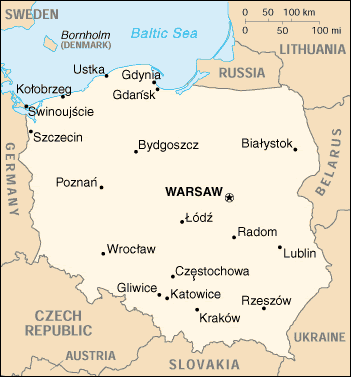 Poland
Poland
History
A “Christian” ruler who united Slavic groups between the Vistula and Oder Rivers established the country of Poland in the tenth century. But Poland was continually fought over for centuries by many nations. In the 1800s, it was carved up and divided between Austria, Prussia and Russia. Poland became a nation again in 1918 but was conquered by invading Nazi forces in 1939. After World War II, Poland fell under Communist rule, but Poles say that Communism in Poland was like a radish, “red on the outside only.” In 1989, the Solidarity party led by Lech Walesa won control of Poland and began taking on the immense task of rebuilding the country. Poland now has a democratic system similar to America’s. Two parliamentary houses, a president and prime minister, govern it.
Church History
The Roman Catholic Church greatly influences everyday life in Poland. More than three-fourths of Poles adhere to its doctrine. A mighty revival swept through Poland in the early 1900s. Thousands of Poles were saved and by 1920 a large number of believers reported being baptized in the Holy Spirit. Ferdinand and Margaret Ewald arrived in 1925 as the first Assemblies of God missionaries to Poland. Evangelism continued through the efforts of other missionaries and national pastors during the Nazi occupation. In 1947, the United Evangelical Church of Poland was formed.
The Movement Today
The Kosciol Zielonoswiatkowy (a Pentecostal denomination) emerged from the United Evangelical Church of Poland, which was comprised of five Protestant denominations during communism. It has three Bible schools with extension programs training about 150 students and facilitates several ministries. Assemblies of God workers labor alongside this Pentecostal Church and report that about 300 ministers now serve approximately 20,000 members and adherents in 191 churches and outstations. In addition, there is a church planting school that is currently starting 12 new churches in southwest Poland.
Additional Facts About Poland
- Capital: Warsaw
- Area: 120,696 square miles
- Population: 38.5 million
- Government: Republic
- Urbanization: 61%
- Currency: Zloty
- Education: Compulsory for ages 7-14; Literacy 99%
- Agriculture: Grain, potatoes, sugar beets, oil seeds and livestock
- Industry: Shipbuilding, chemicals, metals, machinery and food processing




